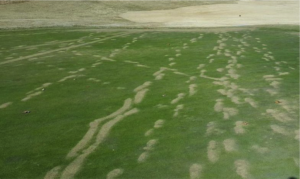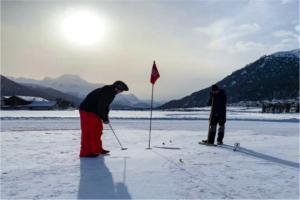Four tips to ensure your turfgrass plants are as healthy as possible during autumn
Related Articles
Here, Dr John Dempsey PhD provides four tips on what you can do to best prepare for winter.
As we head into autumn, turfgrass managers start thinking about and preparing for the coming problems each winter brings regarding inclement and often hostile environmental conditions.
Winter conditions vary considerably, here in Ireland and the UK, winter conditions bring about mostly wet, consistently damp conditions, with minimal snow cover and temperatures only occasionally dropping below zero degrees Celsius. Ideal conditions for problems such as Microdochium patch, soft ground conditions and the ever-increasing problem with worm castings. In less temperate climates, such as northern Europe, Canada, and USA, turfgrass managers often must deal with many weeks of continuous snow cover and extremely low temperatures, conditions allowing for devastating disease incidence and extreme damage from crown hydration and winter kill.
Winter survival of grass on golf greens is primarily dependent on weather conditions. As such, there are many variables that are beyond the control of the greenkeeper. The autumn period with its reduced level of play and favourable growing conditions after the summer stress allows turfgrass managers to focus on preparing for the approaching winter challenges.
While these preparations depend upon turfgrass species, geographic location and local climate, many of the practices listed below are still good precautionary measures to take to safeguard your surfaces.
Improve light and air
Light levels have a significant impact on turfgrass quality and development. Light is important for the acclimation of grass plants to winter stresses; turfgrass growing in shaded conditions during the autumn will be poorly acclimated and less winter stress tolerant. Inadequate light can lead to weakened swards with poor root systems and reduced reserves of energy. Turfgrass is slow to recover from wear and winter injury and biotic challenge, and does not have the carbohydrate reserves to call on when spring arrives. Afternoon shade during winter can result in rapid refreezing and injury. Reduce shade by thinning canopies or removing trees, this can help significantly, with the bonus of improving air movement, resulting in reduced disease pressures.
Top tip: The chainsaw is one of the most important tools for greenkeepers!
Aeration and drier surfaces
Autumn aeration is an excellent procedure to relieve surface compaction following a busy season of foot traffic, machinery pressure and accumulations of excessive thatch. The conditions at this time of year allows for excellent recovery and the surfaces will be better able to withstand the coming challenges.
Combining this with a surfactant programme will provide numerous benefits; turfgrass needs dry conditions to harden off properly for winter. A surfactant programme can provide consistently drier and firmer surfaces, preventing dry down and hydrophobicity, it allows for enhanced photosynthesis and metabolic functions.
Top tip: drier leaf tissues equal less disease!
Raise mowing heights
Increasing leaf surface area by raising mowing heights helps turfgrass generate and store energy for overwintering, as well as reducing stress. Stressed turfgrass is more susceptible to winter injury than healthy turf! And the turfgrass has adequate carbohydrate stores to call on in spring.
Ensure adequate nutrition
Nutritional inputs at this time of year should focus on turf health and not top growth! Avoid excessive nitrogen applications! Numerous programmes are available which have proven success in ensuring healthy turf with good resistance to disease and abiotic stress. Apart from low N inputs, programmes which contain potassium, manganese, zinc, phosphite, calcium, sulphur, iron and silica have all proven effective in this regard. Remember turfgrass that goes into winter weak won’t come out of winter any stronger!
These are just a few suggestions to help prepare your turf for winter stress. The take-home point is to ensure your turfgrass plants are as healthy as possible during autumn, this allows the strength to combat the coming challenges and provide reserves to kickstart again the following spring!
Dr John Dempsey PhD was course manager at Royal Curragh Golf Club, Ireland’s oldest golf club, from 1993 to 2019. He has a first class honours degree in turfgrass science from Myerscough College and a PhD in turfgrass pathology at the University of the West of England’s Centre for Research in Biosciences




























